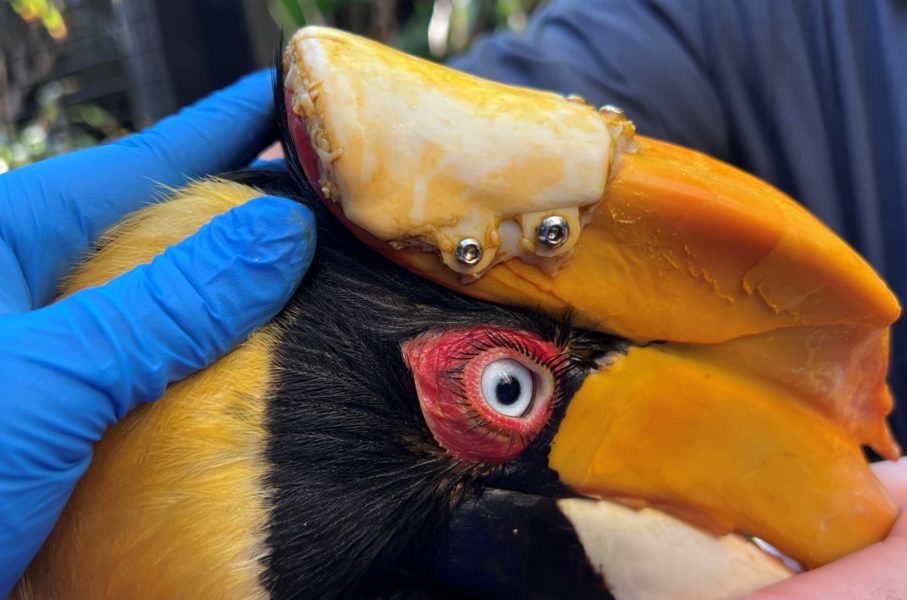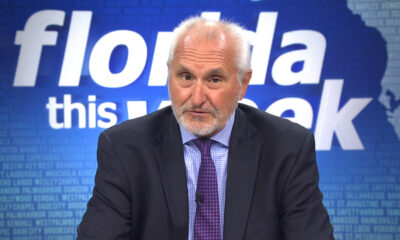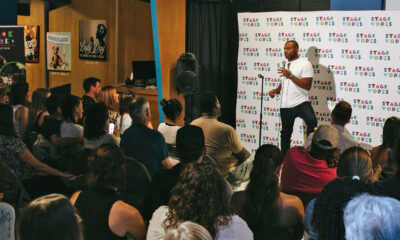Thrive
3D-printed beak saves rare bird from cancer

A cancer-stricken bird living at ZooTampa has a second lease on life thanks to her caregivers, specialists from the University of South Florida and Tampa General Hospital, surgeons from the University of Florida and 3D printing technology.
Crescent is a 25-year-old, three-foot-long great hornbill – native to Nepal, Bhutan, India, Southeast Asia and Sumatra. Numbers are decreasing; the International Union for Conservation of Nature classifies great Indian hornbills as “vulnerable.” When Crescent’s caregivers at ZooTampa noticed a peculiar lesion on the base of her casque (the helmet-like growth over a hornbill’s upper beak), they feared it was squamous cell carcinoma.
ZooTampa’s veterinarians confirmed the lesion was a large, cancerous tumor, a common skin cancer in humans usually fatal in hornbills. Dr. Kendra Baker, a veterinarian at the zoo, immediately sprang into action and began enlisting the help of several experts to help save Crescent’s life.
“Everyone was absolutely critical,” she said. “Even if they weren’t present for the surgery itself, the planning and prep for this procedure were so important.”
The innovative surgery was the first of its kind on a hornbill in the U.S. and just the second attempt worldwide. Baker explained the problem with that type of cancer is that it is locally very aggressive and would have likely eaten through Crescent’s casque and beak. That makes eating virtually impossible, which makes the diagnosis typically fatal.
ZooTampa enlisted radiology and 3D printing clinical application experts from the University of South Florida Morsani College of Medicine’s radiology department, who also work with Tower Radiology at Tampa General Hospital, to help replicate a procedure only attempted once in Singapore.
“We built on that, utilized our own connections here, and it seems like it’s working pretty well for her,” said Baker. “It’s really exciting that we are essentially getting ahead of this condition in the species because historically, it has not gone well.”
Unlike most casque tumors typically found in hornbills, Crescent’s cancer was near the back of her beak, close to her skull. That made removing the tumor – vital to Crescent’s survival rate – more problematic as it would expose her sinuses. So, veterinarians from ZooTampa and USF’s 3D clinical applications department began designing and printing a new, custom 3D casque for the hornbill. They also created a 3D-printed surgical guide to ensure surgeons removed the cancer in its entirety.
“We made the job for the surgeons as easy as possible,” said Baker. “We gave them essentially a stencil to know where to cut …”

Dr. Kendra Baker (left), a veterinarian at ZooTampa, with Dr. Alex Fox-Alvarez and Dr. Kaitlyn McNamara, veterinary surgeons from the University of Florida.
Veterinarians from ZooTampa and two veterinary surgeons from the University of Florida carefully excised the irregular-shaped tumor before attaching the 3D-printed casque to Crescent’s beak with dental acrylic and titanium screws. The prosthetic covers her sinuses, and Baker said Crescent immediately regained full use of her beak.
Baker explained that while that area of a hornbill does have blood vessels, there is not a lot of tissue, which minimized bleeding. She said the most surprising aspect was how quickly the team completed the surgery.
“It’s really just removing the diseased portion and popping that prosthetic on,” she said. “The fact that the procedure was as fast as it was definitely surprised me.”
Crescent needed lightweight but durable material for the prosthetic. Baker said something biocompatible that could absorb the hornbill’s naturally occurring pigments from her preen gland was a bonus. Those pigments provide the bright yellow coloring in Crescent’s beak.
The USF Health Radiology team reached out to their partners at Formlabs, a 3D printing solutions manufacturer specializing in medical-grade materials. Serendipitously, Formlabs was developing a new material called BioMed White Resin. This innovative compound met the prosthetic’s performance requirements and was also biocompatible.
“I am not a materials expert – that is not my expertise,” said Baker. “So being able to pull all of these experts from their own fields, and talking to them about what the end-goal was, and then allowing them to utilize their own experience was a really cool process.”
Formlabs donated the material, and USF Health’s team printed the surgical guide and new casque on a Formlabs medical-grade 3D printer. The project will help create and place human prosthetics, which Baker called “leaps and bounds” ahead of veterinary applications. She said similar human applications have access to more funding, and those procedures only involve one species.
Baker noted that there are now only two case studies for hornbills, four years apart. She said it could take another four years before veterinarians attempt the procedure again.

Baker said Crescent is now cancer-free and has fully recovered from her innovative procedure.
Baker said Crescent is doing great following the surgery, and has recovered incredibly quickly. The hornbill returned to ZooTampa after just two days in the hospital. Baker said the bird’s eating habits and vocalizations are normal, and her caregivers have not noticed any negative effects from the procedure.
“The fact that everyone worked together so well, and we reached out to each other so well, I think that ultimately helps everyone know that we all have each other’s backs, and we’re all in it for the medicine and to make sure that our patients are getting better,” she said. “Regardless of whether or not it is a bird or a human.”








Vicki Lang
April 1, 2022at7:24 am
The pictures make it appear as though the new “beak” is more or less a hood that reinforces the old beak. Is this correct?
It is a great accomplishment!